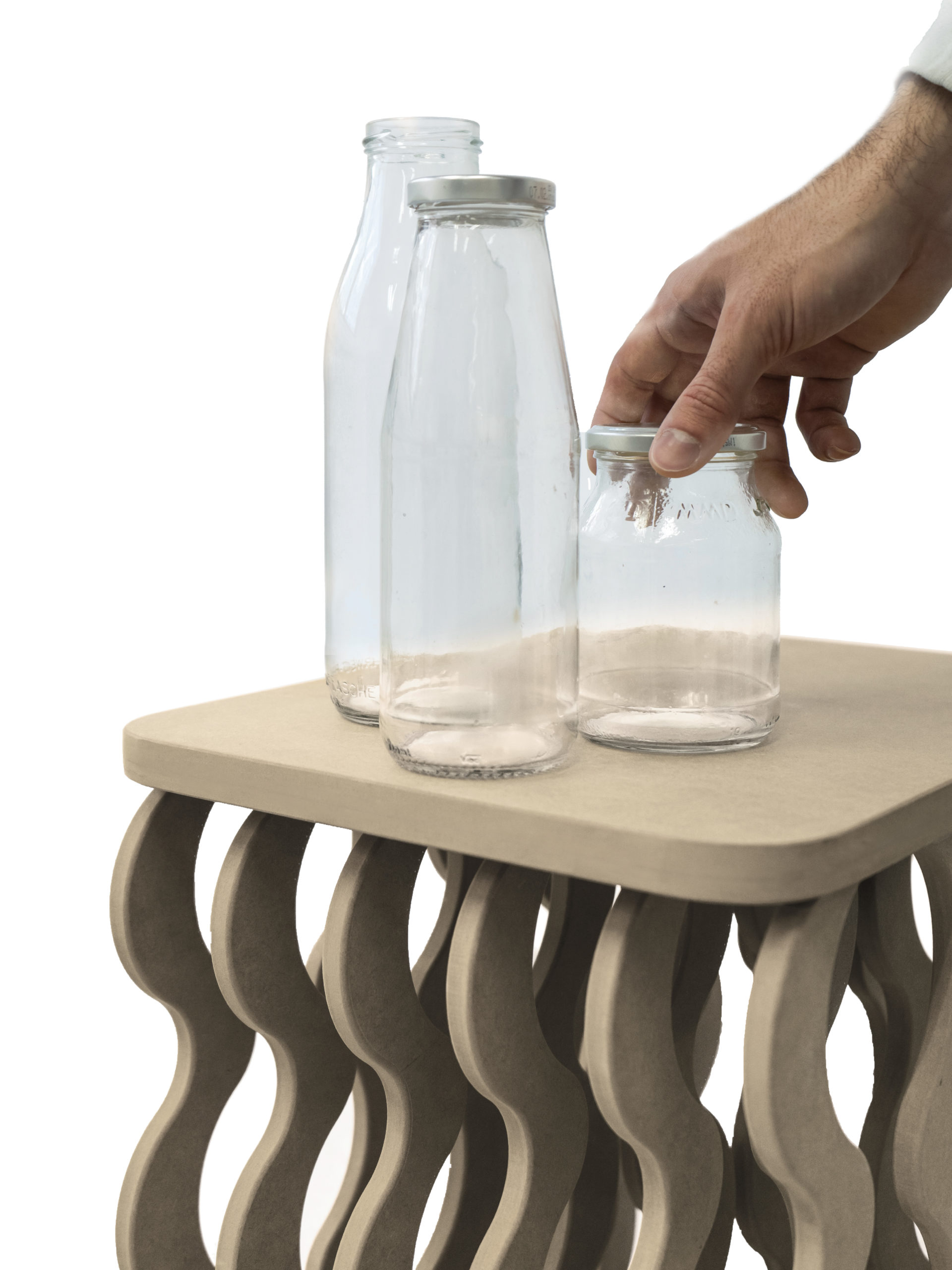Feel Refill | Prostor Studio

Useful information
- Team members
- Country
- —
- Keywords
- -
Detailed Description
Garbage collection and separation could be a struggle for many living in small apartments. Feel Refill offers a solution to make the garbage sorting more appealing and motivate people to act in everyday life.
Project Details
- Does your design take social and cultural challenges and human wellbeing into consideration?
We are planning to host workshops in our local Fablab, where we work together with citizens to build the published designs. By involving customers in the design process, we aim to create meaningful and participatory co-design experiences. These workshops will provide an opportunity for customers to share their insights, preferences, and ideas, enabling them to become active participants in shaping the final product. Through collaboration, we believe that we can create designs that truly meet the needs and desires of our customers, fostering a sense of ownership and satisfaction.
- Does your design support sustainable production, embodying circular or regenerative design practices?
Feel Refill is a project shaped by a responsible consumption lifestyle. It is a multifunctional furniture piece with a bottle storage function under the sitting surface. Eight bottles of any regular size fit between the openings created by the wave-shaped elements. It serves as a reminder to bring deposits or recycled goods to the collection point. It can be used as a sitting place anywhere in the apartment or as a side table.
- Does your design use principles of distribution and open source?
Prostor Studio reflects an open approach by sharing and making the design process transparent and accessible. Our goal is to show steps that we've undergone in order to get to the final product. First Design of the multifunctional furniture piece Feel Refill will be revised and published on our upcoming webpage. However it is not an end-to-end solution for the larger scale production, enthusiasts that want to build it themselves can benefit by choosing different, locally available materials and a wider range of tools (Laser Cutter, CNC or hand and power tools). As in our publication for Distributed Design Book, we compare the first designs and show their benefits in terms of sustainability, material choice and circular economy. The open approach enables users to understand the design choices and the environmental impact of the product, fostering transparency and knowledge sharing.
- Does your design promote awareness of responsible design and consumption?
The selection of materials is guided by sustainable practices. By employing recycled wood fibers and organic, non-toxic dyes in the creation of Valchromat, we are able to reduce waste and lessen our environmental footprint. Beyond being environmentally friendly, the material boasts durability and multiple benefits including a color-through structure, water resistance, and the convenience of applying and reapplying finishing layers for future restoration.
The wavy elements are designed to be symmetrical both vertically and horizontally. This symmetry facilitates their efficient arrangement side by side on the digital layout for CNC milling. Such a design strategy promotes optimized material usage and waste reduction, contributing to manufacturing processes that are more sustainable and cost-effective.
We offer our product in three color variations. By combining and gluing together waves of different colors we can achieve new wave-patterned sheets that can be utilized in the manufacturing of new products. We see this possibility as a way to recycle damaged, returned furniture pieces or fails in manufacturing.
Modular system allows customers to rearrange pre-existing pieces into configurations of various sizes.
Images


